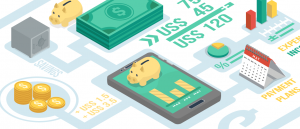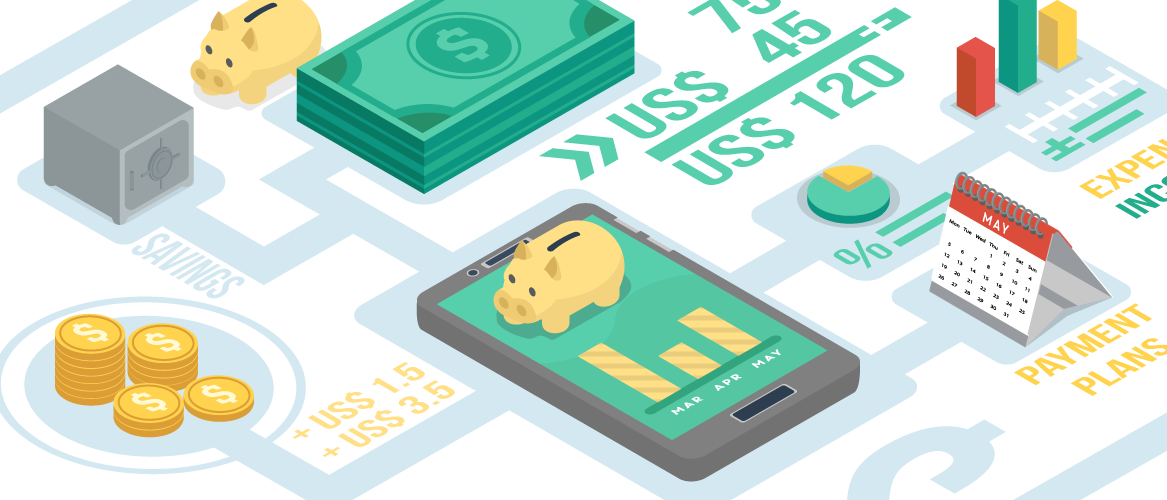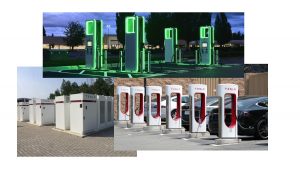By: Rebecca Pinsky

Technology Can Expand Access to Credit
Traditionally, consumers in search of credit have two primary options: obtain credit from a bank or obtain credit from a non-bank direct lender. Typically, usury laws are written to privilege bank lending.[1] Consumer advocates are often wary of non-bank direct lenders, given the proliferation of predatory lenders willing to lend at high-interest rates to subprime borrowers.[2]
Fortunately for consumers, as the capabilities of the internet have grown, so has the marketplace for financial products. Companies that offer digital financial instruments, an industry segment commonly known as fintech, have drastically broadened availability and convenience for consumers.[3]
Bank Partnerships: Rent-a-Bank or Rent-a-Fintech?
Online lenders present interest rates on par with those permissible to banks by partnering with banks to offer digital-native credit products.[4] Bank partnerships are not a recent invention–store-branded credit cards are an example of this model that has existed for years.[5] Both predatory and consumer digital-native lenders rely on bank partnerships to provide loans to their customers. Through partnering with a bank, these lenders clear the significant hurdles that come with obtaining a bank charter and complying with banking law.
Bank partnerships can benefit every party involved: banks, non-bank partners, and consumers. Non-bank partners enjoy the legal privileges extended to banks.[6] Consumers gain a more competitive marketplace for lending products. Banks, especially state banks, can boost their national reaches. (The majority of banks in the United States are state-chartered banks.)[7] In effect, fintech banking partnerships may be thought of as “rent-a-fintech” schemes. A bank saddled with legacy infrastructure, limited reach, and a modest tech stack can invest in innovation by partnering with a fintech to offer credit. The fintech maintains the technology, markets the product, and interfaces with the customer, while the bank originates the loan.[8]
Consumer advocates have decried bank partnerships precisely because the structure allows the non-bank partners to slide past certain consumer protection laws.[9] Indeed, some lenders have used bank partnerships as a way to charge otherwise illegally high interest on loans[10]. Courts and consumer advocates have referred to those as a “rent-a-bank” or “rent-a-charter” schemes.[11]
Valid-When-Made: Federal Preemption of State Usury Laws
Perhaps the most consequential privilege gained by lenders that partner with banks is the right to charge interest at the maximum allowable rate of a state where the bank is located, a practice known as interest rate exportation.[12] In essence, banks are able to “export” the most favorable interest rate from one state to borrowers in other states. The practice was upheld in Marquette National Bank v. First Omaha Service Corp.[13] In Marquette, the Supreme Court ruled that a national bank located in Nebraska could apply an interest rate permissible by Nebraska law to its credit card customers in Minnesota when the same rate would violate Minnesota usury law.[14] Federal preemption through rate exportation has compelled some lenders to shop for banks in states with lax or nonexistent usury limits.
Such a practice flirts with the boundaries of legitimacy, both for bank partnership structures and for preemption law. As a result, it has been addressed by high-profile litigation and recent regulatory rules.[15] The Madden v. Midland Funding, LLC court ruled that once a loan is sold by a bank to a non-bank, the non-bank does not enjoy preemptive rights over state usury laws.[16] The decision disregarded the common law “valid-when-made” doctrine, which bases whether current interest rates are permissible on the permissibility of the rates when the loan was originated.[17] Selling loans is not an unusual banking practice and the Madden decision sent ripples of uncertainty across the financial field. Not long after the decision, the OCC and FDIC responded to Madden with rules that effectively restored “valid-when-made.”[18]
True Lender: Who Made the Loan?
Madden and the aforementioned regulations address whether a loan is valid when made. Determining which entity in a bank partnership actually made the loan requires a separate analysis, commonly referred to as the True Lender doctrine.[19] Courts test the doctrine by evaluating which party had the predominant economic interest in light of the totality of the circumstances surrounding the loan.[20] Identifying the party that finances and bears the risk of the loan is determinative to that analysis.[21] Courts use this practice to “look to the substance, not the form” of the loan.[22] Non-banks who have been assigned or sold loans have been found to be the true lender, which may signal the importance of a bank owning and managing loans throughout the credit lifetime.[23] The True Lender analysis is a holistic one so there may be numerous factors–particularly contractual provisions– unique to each bank partnership that could be decisive in court.[24]
The True Lender doctrine has not benefitted lenders that form bank partnerships with the intent to evade state usury laws.[25] A fintech lender that markets credit products needs to be clear that its role is to market and service the product, not to fund it or bear the risk. Teaming with the bank on compliance and operations functions could intimate that the bank is indeed the lender in fact.[26] For fintech lenders aiming to quickly bring customer-centric credit solutions to market, it may not have to be a bane.
[1] See, e.g., Cal. Const. art. XV, §1 (Capping interest in loans but creating an exception for banks).
[2] Will Kenton, Predatory Lending, Investopedia (June 15, 2020), https://www.investopedia.com/terms/p/predatory_lending.asp.
[3] How Fintech Can Make Banking More Inclusive – and Empowering, Wharton: Knowledge@Wharton (Aug. 27, 2019), https://knowledge.wharton.upenn.edu/article/fintech-can-make-banking-inclusive-empowering-consumers/ (“Fintech as an industry has made improving and democratizing consumer financial health a key aim.”).
[4] Mike Whalen, Bank Partnership Or Go It Alone?, Goodwin: Fintech Flash (Aug. 23, 2016), https://www.goodwinlaw.com/publications/2016/08/08_23_16-bank-partnership-or-go-it-alone.
[5] See id.
[6] See 12 U.S.C. 85 (2012).
[7] See Statement for the Record: “Rent-a-Bank Schemes and New Debt Traps”, CSBS (Feb. 5, 2020), https://www.csbs.org/policy/statements-comments/statement-record-rent-bank-schemes-and-new-debt-traps.
[8] See CSBS, supra note 5.
[9] Consumer Fin. Prot. Bureau v. CashCall, Inc., No. CV 15-07522-JFW (RAOx), 2018 U.S. Dist. LEXIS 9057 at 4 (C.D. Cal. 2018).
[10] See id at 6.
[11] See id. See also Letter from Linda A. Lacewell, Superintendent, N.Y. State Dep’t of Fin. Serv., to Brian P. Brooks, Acting Comp., OCC (Sept. 2, 2020), https://www.dfs.ny.gov/system/files/documents/2020/09/20200901_comment_letter_occ_true_lender_rule.pdf.
[12] See 12 U.S.C. § 85 (2012). See also 12 U.S.C § 1831(d) (2011).
[13] See Marquette National Bank v. First Omaha Service Corp., 439 U.S. 299, 313-18 (1978).
[14] See id at 308-09.
[15] See Madden v. Midland Funding, LLC, 786 F.3d 246 (2d Cir. 2015). Compare with Permissible Interest on Loans that are Sold, Assigned, or Otherwise Transferred, 85 Fed. Reg. 33,530 (June 2, 2020) (to be codified at 12 C.F.R. pts. 7, 160); Federal Interest Rate Authority, 85 Fed. Reg. 44,146 (July 22, 2020) (to be codified at 12 C.F.R. pt. 331).
[16] See Madden v. Midland Funding, LLC, 786 F.3d 246 (2d Cir. 2015).
[17] Rick Fischer, et al., Attorneys General Push Against OCC’s Attempts to Codify “Valid When Made” Rule, Morrison Foerster: Client Alert (Jan. 29 2020), https://www.mofo.com/resources/insights/200129-valid-when-made-rule.html.
[18]See Permissible Interest on Loans that are Sold, Assigned, or Otherwise Transferred, 85 Fed. Reg. 33,530 (June 2, 2020) (to be codified at 12 C.F.R. pts. 7, 160); Federal Interest Rate Authority, 85 Fed. Reg. 44,146 (July 22, 2020) (to be codified at 12 C.F.R. pt. 331).
[19] See CSBS, supra note 5.
[20] See, e.g., Cash Call, Inc. v. Morrisey No. 12-274 2014 W. Va. LEXIS 587, at 41-45 (W. Va. 2014).
[21] See id.
[22] Consumer Fin. Prot. Bureau v. CashCall, Inc., No. CV 15-07522-JFW (RAOx), 2018 U.S. Dist. LEXIS 9057 at 16 (C.D. Cal. 2018).
[23] See id at 19. See also Cash Call, Inc. v. Morrisey No. 12-274 2014 W. Va. LEXIS 587, at 49 (W. Va. 2014).
[24] See id at 18.
[25] See CSBS, supra note 5.
[26] Mike Whalen, Marketplace Lending Bank Partner as True Lender, Goodwin: Fintech Flash (Sept. 6, 2016), https://www.goodwinlaw.com/publications/2016/09/09_06_16-marketplace-lending-bank-partner#[1].
Image Source: https://search.creativecommons.org/photos/f41058ae-ced8-4be4-a7ab-eb6e2e29a54d






